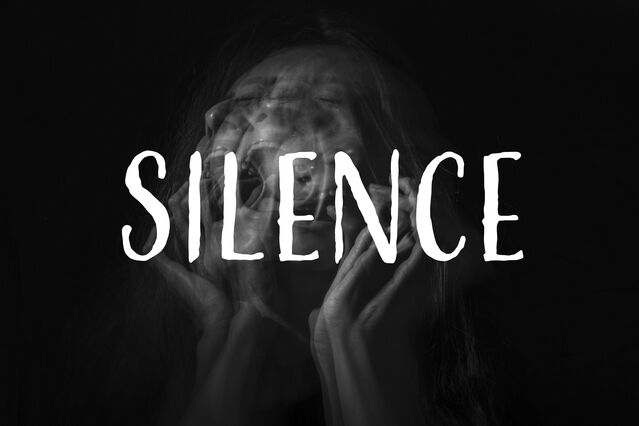Domestic Violence
Silence, Secrecy, and Shame: Reframing Domestic Violence
Abuse reflects the attitudes, beliefs and value-system of the perpetrator.
Posted April 2, 2022 Reviewed by Kaja Perina
Key points
- Violence against women has been classically framed as a mysterious man, hiding in the shadows waiting to attack – the stranger danger illusion.
- Most violence against women is domestic, occurring within the supposed safety and security of a relationship.
- Perpetrators of abuse and violence are not normalised as everyday people, so we continue to be shocked when they are exposed.

Toxic Stress Is Stress Nonetheless
Here at ‘The Bridge’ we bridge the gap between stress and disease. Although we seldom think of domestic violence in terms of stress, we intrinsically know it to be stressful. How we conceptualise stress is critical to how we approach it, more important still, because the perception of stress will ultimately determine our mental health, how we sleep, and what occurs beneath the skin.
A Critical Caveat
It is time to expel the myths that distort our perceptions of the dyad of abuse in domestic violence. Let us not ignite a battle of the sexes. Not all men are perpetrators. Not all perpetrators are men. Equally, victimisation is not exclusive to women. Irrespective of the gendered configuration, domestic violence is a violation of human rights.
Still, the distribution of abuse informs us that most incidences of violence are perpetrated by men and there is a statistical slant toward victims being women. Worldwide estimates indicate that 1 in 3 women have been subjected to domestic violence in their lifetime (WHO, 2021). There are, curiously, a plethora of statistical reports on the number of women who experience domestic violence, but a dearth of prevalence statistics or formal estimates of men who have perpetrated domestic violence.
This knowledge deficit has limited the development of effective evidence-based, preventative interventions (Hales & Gannon, 2021). Any other societal trauma experienced at this scale would be dealt with as a crisis, with the solemnity it deserves. But domestic violence has been normalised; rendered a personal issue of unimpressive magnitude, unworthy of legitimate attention or widescale action, and is likely why the corporate voice on this matter has become silent.
The Stranger Danger Illusion
Given that domestic violence is a profound, systemic, social issue, it warrants both our sustained attention and action. Representations of domestic violence in the media, or lack thereof, has been a longstanding concern, particularly as the media yields the power to shape consumer opinion. Although media content may be critically absorbed, the way that news is textually and visually represented promotes or hinders certain interpretive frames, with some narratives being privileged over others. This has serious ramifications for societal opinion and, thus, social action (Lloyd, 2020).
Due to increased reporting during the COVID-19 pandemic, in addition to growth in civilian journalism, domestic violence has become somewhat of a hot topic of recent, but the longevity of this interest is yet to be seen. In spite of this putative paradigm shift, the media have classically framed violence against women as a mysterious deviant man, hiding in the shadows, waiting to attack – the stranger danger illusion.
When, in truth, most violence against women is domestic, occurring within the purported security of an interpersonal relationship. Such sensationalist coverage, gaslighting, denial, and ensuing disillusionment, reinforces the insidious and unrelenting nature of domestic violence that erodes society. It contributes to the psychological trap that millions of people find themselves in, irrespective of their individual characteristics.
Mr Nice Guy
It is important to dispel other misconceptions, such as incidences of domestic violence being alcohol or drug fuelled, by the uneducated, the poor, or convicts, by those who lack power in other domains. Unfortunately, perpetrators of abuse and violence are not normalised as everyday people, so we continue to be shocked, in disbelief when they are identified, caught, and exposed. Despite popular belief, they are often charismatic, shrewd, funny, and charming. Traits that together develop into a spontaneous and organic attraction.
Perpetrators are uniquely motivated to construct magical, yet fictitious, conditions that feature women at the centre of their worlds. For women, this engenders an artifice of psychological safety and security, as they tread the proverbial Venus flytrap. A good reputation is also central to the longevity of abuse – and escape from punishment for that matter! The intention is to conceal abuse, making it imperceptible and challenging to prove. It is very often strategic – a game of chess if you will. Yet, there exists a shadow persona. Aggressive. Forceful. Intimidating. Violent.
Boys Will Be Boys
There are a number of potential reasons for why boys may grow up to become abusers as men. With exception to psychopathology, childhood traumatisation, unresolved trauma, and unregulated, misplaced anger are all pathways to adulthood dysfunction. Exposure to toxic familial exemplars is also a high-risk factor for generational dysfunction by way of learned behaviours. The amplified role of pornography in shaping a warped sense of reality is an additional overlooked concern, along with sports culture, gaming, and the romanticisation of gangs, which can evoke antipathy, hostility, and brutality. Then, irrespective of merit, males are judged less, questioned less, labelled less, and are afforded more opportunity.
The liabilities of male socialisation include a false sense of what masculinity is, unrealistic expectations, and a desensitisation to the wellbeing of others. Society creates the monster then acts surprised by the monster it has created. It is not biological, so it is not inevitable. Distorted societal depictions of masculinity prime men toward abusive behaviours. We celebrate and, thus, foster risk taking, recklessness, anger cloaked in bravery, bravado veiled in strength, irritability justified, and violence excused – after all, boys will be boys.
The weight of societal expectations oppresses the natural male disposition, with clichéd depictions of masculinity; powerful, strong, confident, bold, courageous, assertive, independent, wealthy. Thus, when a man fails to live up to these specious archetypes, it creates an internal void and insecurity that he is typically ill-equipped to manage, given men are seldom taught to manage their emotions adaptively. Instead, as a rite of passage to manhood, they are taught to suck it up and fight it out because big boys don’t cry. It is time that we change what it means to be a boy, and ditch unhelpful caveman stereotypes.
Abuse reflects the attitudes, beliefs and value-system of the perpetrator, ideals held around gender roles, and a sense of entitlement. Abusers characteristically lack self-awareness and introspection, and yet they manage to demonstrate restraint toward others – insinuating a choice to abuse. Consider why most perpetrators do not attack their managers, their friends, their colleagues, their neighbours. Abuse is not subject to impulsivity. It is not an accident. It is not a mistake. What it does reflect, however, is a power imbalance.
.

This is part of a three-part series, read PART TWO here: "The silence, secrecy and shame around gendered violence forces each new victim to reinvent the wheel, and without an indication of support domestic violence can be soul-destroying."
.
References
Hales, S. T., & Gannon, T. A. (2021). Understanding Sexual Aggression in UK Male University Students: An Empirical Assessment of Prevalence and Psychological Risk Factors. Sexual Abuse, 10790632211051682. https://doi.org/10.1177/10790632211051682
Lloyd, M. (2020). Examining Domestic Violence and Abuse in Mainstream and Social Media: Representations and Responses. In S. Ramon, M. Lloyd, & B. Penhale (Eds.), Gendered Domestic Violence and Abuse in Popular Culture (pp. 33–60). Emerald Publishing Limited. https://doi.org/10.1108/978-1-83867-781-720201003
WHO, W. H. O. (2021). Violence against women. https://www.who.int/news-room/fact-sheets/detail/violence-against-women




